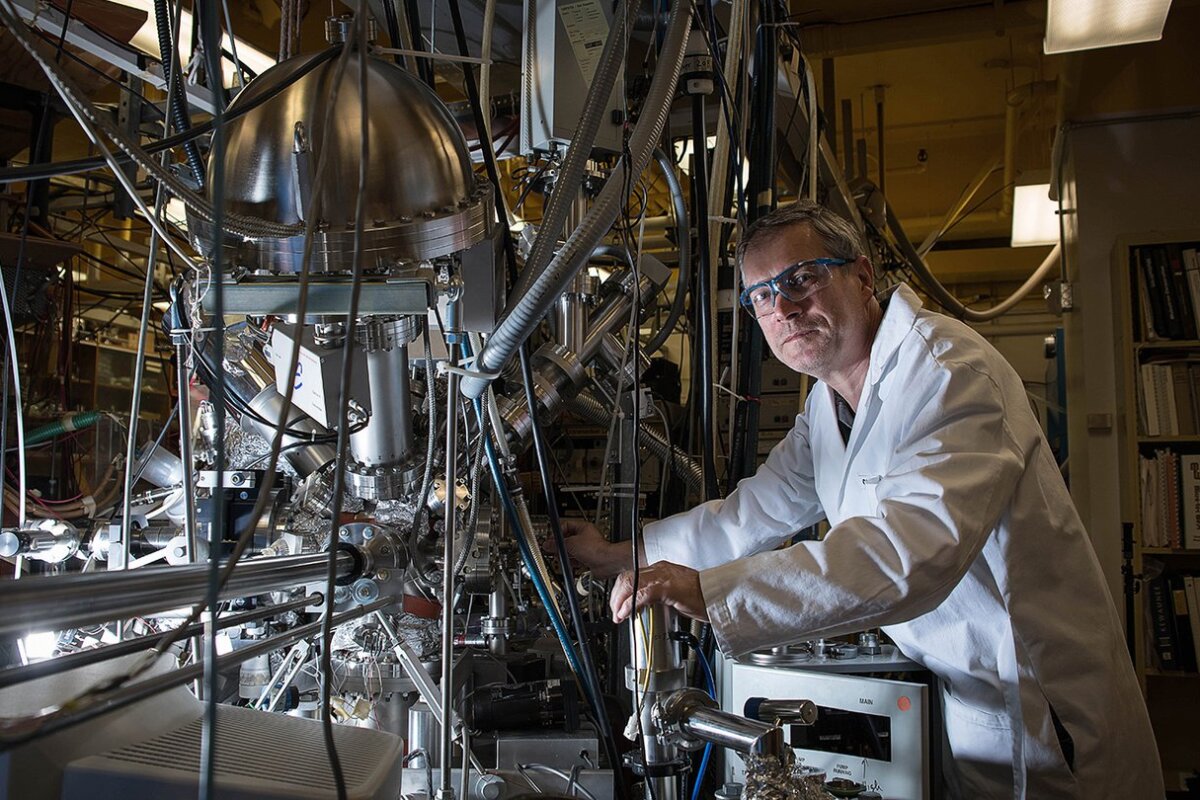begin quote from:
Caltech reactor could convert CO2 into breathable oxygen for space trips

Konstantinos Giapis, with the reactor that converts carbon dioxide into molecular oxygen
Caltech
VIEW 2 IMAGES
Although oxygen is common throughout the cosmos, most of it isn't in the form that we as humans need to breathe – molecular oxygen, or O2. Now, researchers at Caltech claim to have created a reactor that can turn carbon dioxide into molecular oxygen, which could help us fight climate change here on Earth or generate oxygen for life in space.
Oxygen is one of the biggest hurdles to human space exploration. Earth is the only place we know of that has the vital gas in breathable quantities, and taking it with us is expensive and unsustainable. On the International Space Station, the crew breathes easy thanks to electrolysis – where water is zapped to split it into its constituent hydrogen and oxygen gases – along with a pressurized storage tank for backup. There's talk of terraforming Mars to be more Earth-like, but that's a huge undertaking that isn't remotely possible with today's technology.
So the researchers on the new study set out to find another way to produce oxygen. They ended up creating a reactor that, in a sense, sounds very simple – take CO2, then strip out the C. The team found that if you shoot carbon dioxide at an inert surface like gold foil, the molecule can be split to form molecular oxygen and atomic carbon.
The team says the reactor works in a similar fashion to a particle accelerator. The CO2 molecules are first ionized and then accelerated using an electric field, before being slammed into the gold surface. In its current form the yield is pretty low – only creating about one or two oxygen molecules for every 100 CO2 molecules fired – but it's an intriguing proof of concept that could be scaled up in the future.
In fact, the researchers say the reaction occurs in nature. The concept began as an attempt to explain the unexpected discovery of molecular oxygen on comets. After the Rosetta spacecraft detected the gas streaming out of Comet 67P, it was originally believed that the oxygen must have been locked away in the rock for billions of years.
But in 2017 the Caltech team proposed another possible explanation: that the oxygen was being created by other compounds slamming into the comet at high speeds. After molecules of water or carbon dioxide are emitted from the comet, the solar winds can accelerate them and slam them back into the comet. That in turn could create molecular oxygen, and served as the inspiration for the Caltech reactor.
In future, the reactor could potentially be put to work producing oxygen for astronauts traveling to the Moon, Mars or beyond. Or, back here on Earth, it might be useful for removing CO2 from the atmosphere and converting it into oxygen, to help combat climate change. Of course, there's still plenty of work left to do to get it to that stage.
"Is it a final device? No," says Konstantinos Giapis, lead author of the study. "Is it a device that can solve the problem with Mars? No. But it is a device that can do something that is very hard. We are doing some crazy things with this reactor."
The research was published in the journal Nature Communications.
Source: Caltech




No comments:
Post a Comment